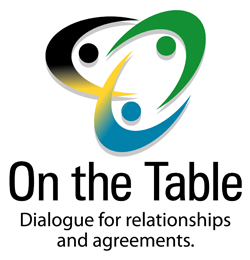What happens when a team is divided on the merits of a new idea- when some people support it and others oppose it? In some teams, the fate of the idea is determined by the status of the individuals’ involved: if the status of the supporting group is higher, the idea is accepted, and if the status of the supporting group is lower the idea is rejected.

Other teams use techniques such as voting to resolve the situation. However, this isn’t always such a good idea, because issues of obedience and conformity can come into play. And, sometimes, all voting actually does is postpone conflict rather than reduce it.
So what do you do when people in your team disagree about an idea? Often the best thing to do is to try to use the disagreement to construct a better solution. In fact, it’s often worth actively seeking out debate, so that it can be used productively. This tool shows you how.
Putting the idea up for open discussion involves inspiring team members to think strategically about any new idea in a positive, cooperative climate.
Team members’ can use this process to assess the merit of any idea, evaluating and adding ideas that their team mates have produced. All team members are encouraged to participate.
First, ask the team members who have opposed the new idea to explain their rationale and viewpoint. The explanation has to be as clear and as comprehensive as possible.
The supporters of the new idea need to indicate how confident they are, or how uncertain they are about their proposals providing validation where possible.
Next, encourage people with opposing opinions to state their reservations, and seek out more information about the supporting group’s position. Then, ask people opposing the idea to restate the information provided by the supporting group in their own words. This ensures that there are no communication gaps.
Vigorous debate generally follows. The purpose of the debate is for members to be able to explore the idea, and develop an even better idea from it. Ideally this will be one that reflects the best elements of each argument, with the flaws in each being identified and eliminated.
For this approach to work well, however, you’ll need to put some safeguards in place to keep things positive, and to ensure that people are not “bruised” by the process. Make sure that healthy review of the idea:
- Is used in an atmosphere that is cooperative, not competitive;
- Does not become about “winning”;
- Does not become result in people casting aspersions about each other’s competence and abilities;
If you don’t do these things, strategic review of ideas can degenerate into an unpleasant squabble. Remember, you have to coach team members to focus on “team wins”, not on “individual wins”- i.e. on developing a final idea that is better than any of the initial idea.
This team win will only happen if members are able to put aside their egos and combine diverse ideas to build a truly “winning idea” that will benefit the team as a whole.
It isn’t easy to get people to put their egos on hold, and you may have to intervene to ensure that the three safeguards are followed. However, if you are consistent with your approach, team members will learn and grow, and become more comfortable with the give and take involved in this strategic review process.

How can we help-
On the Table Consulting creates and implements a wide variety of communication and management consulting services, including organisational process development, executive and leadership development, and conflict resolution workshops.
On the Table Consulting offers mediation to facilitate conversations involving personal and workplace conflicts.
On the Table Consulting assists people and teams to have conversations in a timely controlled impartial manner.

